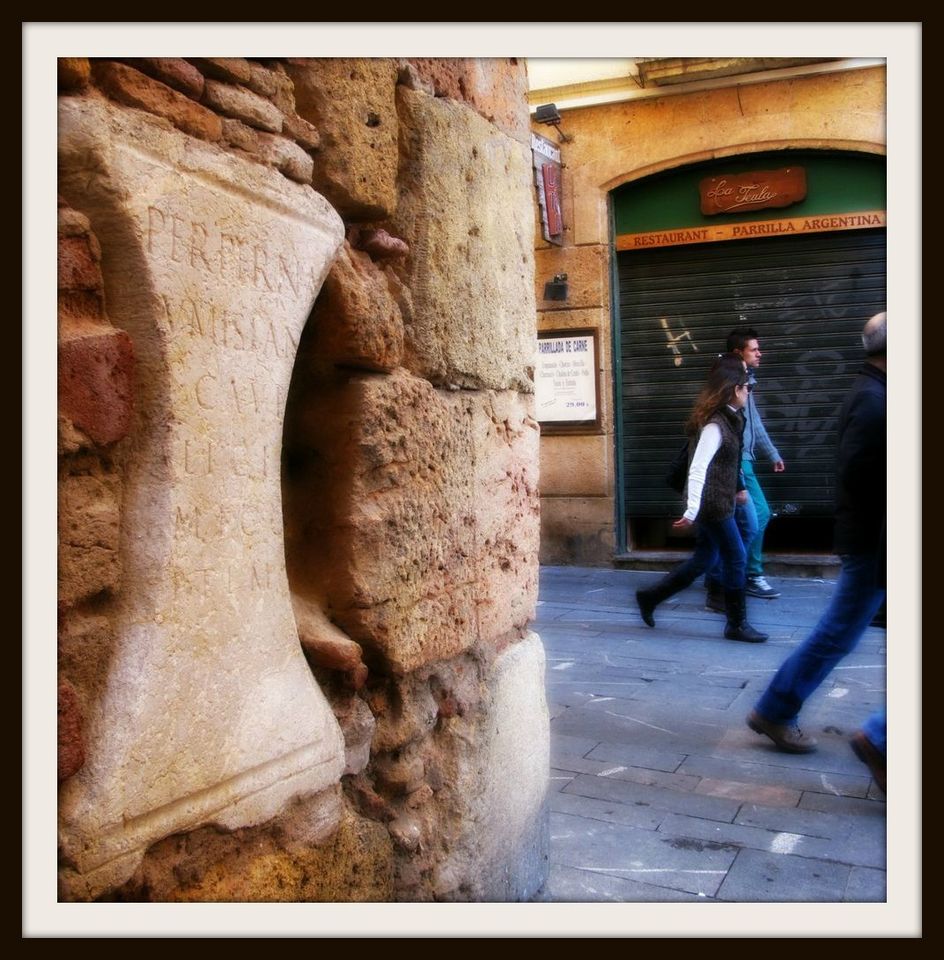Living in a historical city is a suggestive experience. Day by day is shared with the quotidian facts, job, family, friends, social life… and… also, the testimonies from the past, ancient walls, old arches, the stone. The stage is different on any other town. In Tarragona, day-by-day, especially around the Part Alta, becomes an adventure among stones, sensations, colours, and even, smells. We can still get that aroma of onion cooked over low heat at midday, when its steams escape from some restaurant or house at the Part Alta, or that nostalgic scent made by freshly baked bread, or the one of damp soil by the dewy grass at the “Camp de Mart” when spring’s getting closer, and let’s not forget about the smell of the orange trees around the cathedral, or the delicate and fleeting sweetness of the cloister’s magnolias. Added to his olfactory organoleptic experience, there are the visual and tactile ones. Luckily, we can still reach for the millenarian stones of one of the most ancient roman walls in Europe, or stroke an inscription on one of the Destral street’s facades, or even sit down on an old amphitheatre’s terraces. Taste is a more sophisticated sensation; the flavour of anchovies and a dispenser’s vermouth on a terrace at the Fòrum Square; a rice dish or an ice cream at the Rei’s, or a lunch in a table besides one of the Concili Provincial’s walls, are both quotidian and extraordinary experiences. The hearing sense equally gets the tone of the gralla during a castells’ attempt, the sound of kettledrums, or the silence of a procession, or the low notes of the cathedral’s organ, next to some school’s kids having fun with their games on the playground besides the wall. And sight wise, the reflection of sunlight against the Cathedral, against the millenarian walls of the Praetor.
And the olden stones go beyond public areas, squares, streets, facades, becoming accomplices and confidants to secrets and life, at times public, at times private, sometimes furtive, or even intriguing. Going in the establishments at the Plaça de la Font provides a mysterious discovery of the Roman Circus’ interior. Ancient archways restored during the Middle Ages, where terraces and medieval arches, and hidden doors taking to unknown destinations, coexist. On the carrer Major, a glass floor conceals, covers, but also shows a magnificent staircase which these days leads to nowhere, but twenty centuries ago, used to join the square of the Augustus’ Temple to the Concili Provincial’s gardens. The Visigothic columns at the Rovellat square and the Granada Street evoke the city of the latter antiquity. Some roman inscriptions besides two Jude one’s on Escrivanies Velles street remind us about the multilingual and multicultural Tarragona’s personality; pointed arches at the stores on the carrer Major, or at La Nau, over roman ashlars tells us about how the city was transformed along more than two millenniums, defining a rewritten codex both so rich and complex as intriguing.
Fashion stores with rooms inside old medieval cisterns, or amazing roman walls integrated in a restaurant or pizzeria’s dinning-room live together in a city which is alive, which moves. Thus, a magical situation is born, where different sensations are pervaded in a space which, despite the trace of time, is filled with a light, a kind of stones and testimonies, which turn those sensations into a timeless, everlasting experience.
Joan Menchón is the Municipal Archaeologist in Tarragona’s City Council
* Translated by Artur Santos




